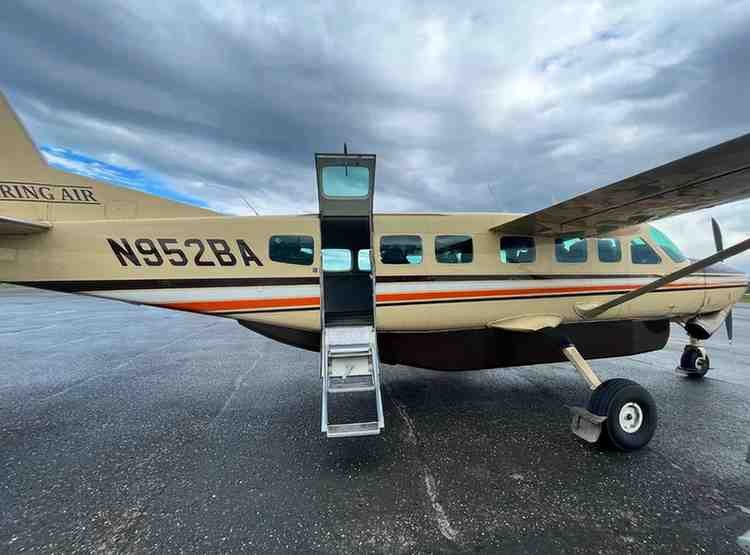The Bering aircraft carrying 10 people that went missing was found crashed on Friday on sea ice off the western coast of Alaska.
The aircraft Cessna 208B Grand Caravan operated by Bering, took off from Unalakleet at 2:37 pm and was on its way to Nome, Alaska with nine passengers and a pilot. The aircraft went missing less than an hour of its journey.
The plane vanished approximately 30 miles (48 km) southeast of Nome and was later discovered about 12 miles (19 km) offshore. At the time of the incident, the region was experiencing light snow, fog, and temperatures of 17°F (-8.3°C).
The aircraft suffered a sudden and rapid loss of elevation and speed at around 3:18 p.m. as per the radar forensic data provided by the US Civil Air Patrol.
USCG Lt Commander Mike Salerno stated that three bodies had been found inside the plane while the seven others were expected to be inside the wreckage as the two rescue swimmers identified.
Coast Guard Lt. Cmdr. Benjamin McIntyre-Coble stated that the exact cause of the crash remains unknown, with no distress signals being received.
The fire department said Friday that the emergency locating transmitters, designed to activate upon seawater exposure, failed to send a distress message for the aircraft.
McIntyre-Coble shared that an emergency locater transmitter is present in every place as it is a device that, when exposed to seawater, sends a signal to a satellite, which then relays that message back to the Coast Guard if there’s an aircraft “in distress.”
He said, “There have been no ELT notifications to the United States Coast Guard. Why that has occurred, or why that hasn’t occurred is, not something that we’re entirely clear about.”
Multiple agencies, including local, state, and federal authorities, took part in the search. Bering Air aircraft conducted grid pattern searches along the coastline, while the Coast Guard scoured the ice-dotted waters and tundra in an effort to find survivors.
With many Alaskan communities lacking road connectivity, airplanes often serve as the only reliable mode of transportation, especially during winter. Bering Air provides regular flights to 32 remote villages, including Unalakleet and Nome, where air travel is crucial for supplies and mobility.








